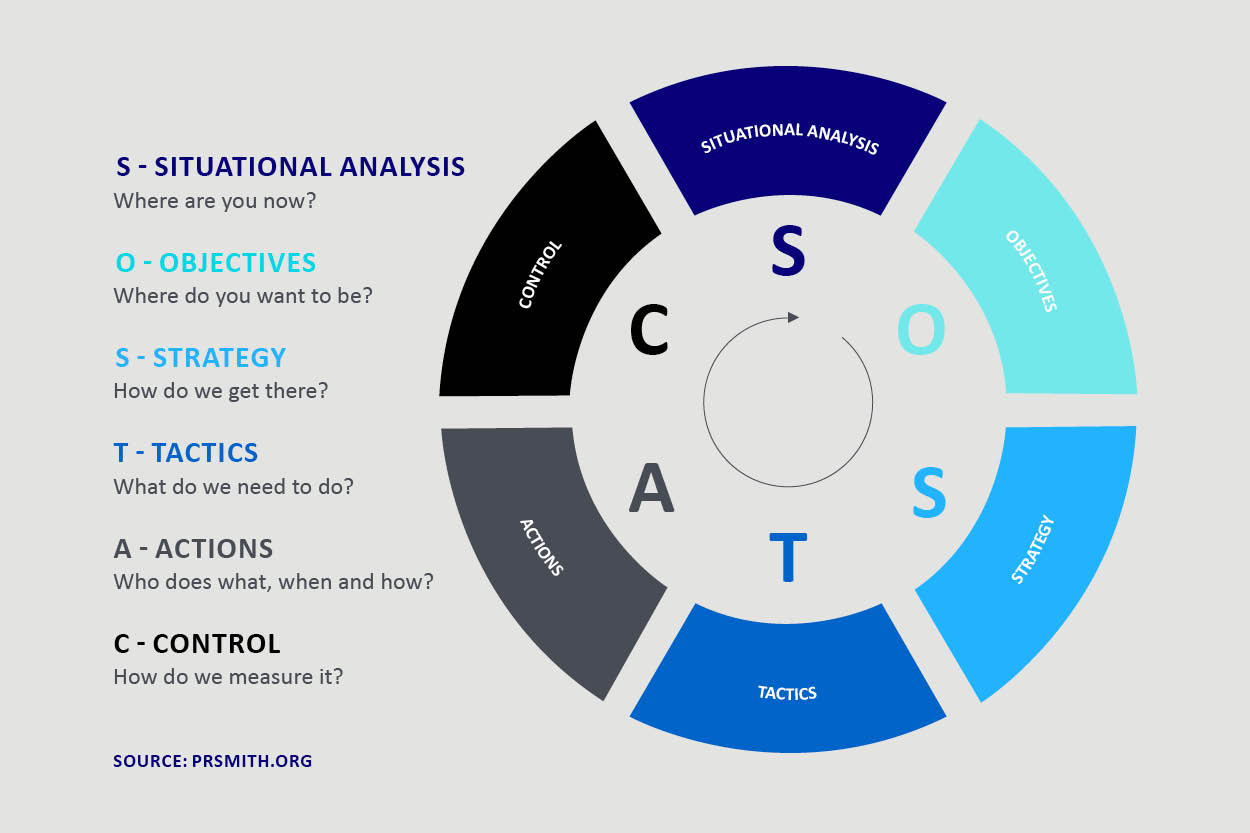Back to basics: Writing your first marketing plan

- 02 September 2018
Tasked with writing your first marketing plan? Here’s what you need to know
In the disruptive environment of the modern business world, it’s often the fundamental skills that get forgotten. Yet, it's these skills that form the foundations of business and provide the platform for you to grow sustainably and profitably. A marketing plan is a key example.
Essentially, a marketing plan is a return to the basics. It’s all about finding out where you stand now, analysing where you want to be, and then establishing a route to get there. It is the touchstone for all marketing activity and, ultimately, the long-term mission of the business.
We explore five steps to writing a marketing plan that delivers for your business. This plan broadly follows the SOSTAC® model created and popularised by expert marketer PR Smith.
What is SOSTAC®?

SOSTAC® stands for Situation, Objectives, Strategy, Tactics, Action and Control. The marketing writer Paul Smith created the mnemonic SOSTAC® to remind people of the framework for a plan. Here's what each of those mean:
- Situation
- Where are we now?
- Objectives
- What do we want to achieve?
- Strategy
- How are we going to achieve it?
- Tactics
- What do we need to do?
- Action
- Who's going to do it, when and how?
- Control
- How do we measure it?
CIM members can learn more in our member-only Marketing Expert area.
On to making the plan itself!
Marketing Plan Step 1 – Where are we now?
It’s unlikely you’ll be starting completely from scratch. Any major business will have a mission statement, corporate objectives, knowledge of its market and will have probably done a marketing audit assessing the situation of the business.
The best mission statements succinctly and memorably describe what the company wants to be known for, which forms a large part of their brand identity. For Google, this is, “To organise the world’s information and make it universally accessible and useful.”
This leads into the corporate objectives, as the marketing department is, typically, only one part of the wider business. You must make sure that your objectives align with the rest of the business.
With all this in mind, marketing is about where you want to get to, but it’s also about analysing what you have now. This is where you have a marketing audit, where you will investigate how the company stands now.
This will then lead into an analysis of where the company currently stands, the simplest way of analysing this is a SWOT analysis.
A good SWOT analysis will show you that your threats present new opportunities, and your strengths can be used to cover your weaknesses and, eventually, improve them.
Marketing Plan Step 2 – What are our business objectives?
Now that you know where your business sits in the wider cycle, you can set your objectives. The SWOT analysis has revealed that you have a strong brand value, but your customer base is diminishing and you’re in need of attracting new customers. Your objective can be to increase new customers by 10%. It must be in line with business goals, and it must be objective, so that the plan can show return on investment.
Marketing Plan Step 3 – How are we going to get there?
Now you know what you want to achieve, you must decide how you’re going to get there; this will be the strategy. Typically, this is divided into four potential options, known as Ansoff’s matrix.
The key to this will be in your segmentation, and which of your customer segments your product offer is most relevant to. The plan must show a differentiated offer to the market segment and prove that targeting this area will be worth the investment by the business.
Marketing Plan Step 4 – What tools do we have to get there?
Once you have your strategy and you know which segments you will target, you can come up with a tactical plan. This is, essentially, the short-term actions that will help you reach your end goal. This is where you’ll come across your 7Ps: product, price, place, promotion, people, process and physical evidence.
All of these will be involved in the action plan, detailing a timeline, what needs to be done, who does it and is there anything stopping you doing it. Only after doing all this will you be able to finalise a budget.
Marketing Plan Step 5 – Implement and analyse
These steps will give you an action plan, whereby everyone is aware of their responsibilities and you have an overall objective to work towards. Implementation may come in many forms – such as advertising, surveys, new product launches or simply interacting with new customers – but it must be done with the support of all relevant parts of the business. Remember, marketing increasingly touches on all aspects of working life.
There is one golden rule with marketing; be flexible with your plan. There will be external factors you cannot control, there will be parts that won’t work quite as well; so, be prepared to change them where appropriate.
But remember, these are just the basics. This article is a precis of the comprehensive material you can find on CIM’s member-only Marketing Expert site, where members can find a host of comprehensive marketing material, resources and tool kits. For wider details on every topic mentioned, and a comprehensive view of the tools you need to succeed in marketing, become a member of CIM and you’ll have access to the resources you need to build your capabilities.
More resources:
Webinar: Fundamentals of marketing
Webinar: Six steps to creating a quantified value proposition
Template: Marketing plan (member-only)
Practical guide: Building a marketing plan (member-only)
To access these resources and more, become a member of the Chartered Institute of Marketing today for as little as £15.75 a month. Your membership will give you access to career-enhancing content, including templates and practical guides, as well as a global marketing community through events and networking.

- 0 views

 FAQs
FAQs
 Log in
Log in
 MyCIM
MyCIM






